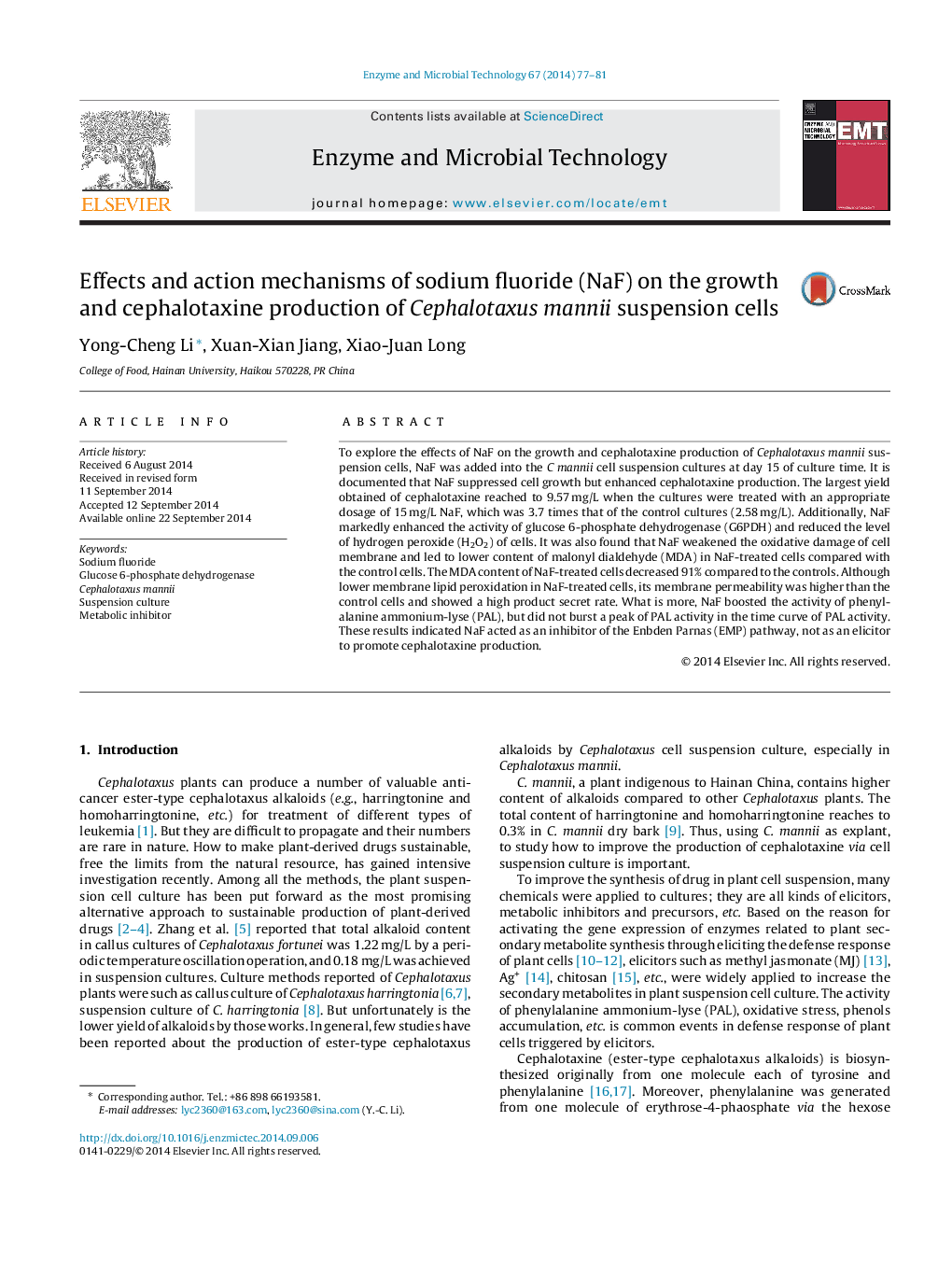| Article ID | Journal | Published Year | Pages | File Type |
|---|---|---|---|---|
| 17121 | Enzyme and Microbial Technology | 2014 | 5 Pages |
•NaF improved the production and secrete of cephalotaxine.•The appropriate dosage of NaF was 15 mg/L for cephalotaxine production.•NaF enhanced the activity of G6PDH and strengthened the HMP pathway.•NaF increased the cell membrane permeability.•NaF was not an elicitor, but acted as a metabolic inhibitor of the EMP pathway.
To explore the effects of NaF on the growth and cephalotaxine production of Cephalotaxus mannii suspension cells, NaF was added into the C mannii cell suspension cultures at day 15 of culture time. It is documented that NaF suppressed cell growth but enhanced cephalotaxine production. The largest yield obtained of cephalotaxine reached to 9.57 mg/L when the cultures were treated with an appropriate dosage of 15 mg/L NaF, which was 3.7 times that of the control cultures (2.58 mg/L). Additionally, NaF markedly enhanced the activity of glucose 6-phosphate dehydrogenase (G6PDH) and reduced the level of hydrogen peroxide (H2O2) of cells. It was also found that NaF weakened the oxidative damage of cell membrane and led to lower content of malonyl dialdehyde (MDA) in NaF-treated cells compared with the control cells. The MDA content of NaF-treated cells decreased 91% compared to the controls. Although lower membrane lipid peroxidation in NaF-treated cells, its membrane permeability was higher than the control cells and showed a high product secret rate. What is more, NaF boosted the activity of phenylalanine ammonium-lyse (PAL), but did not burst a peak of PAL activity in the time curve of PAL activity. These results indicated NaF acted as an inhibitor of the Enbden Parnas (EMP) pathway, not as an elicitor to promote cephalotaxine production.
